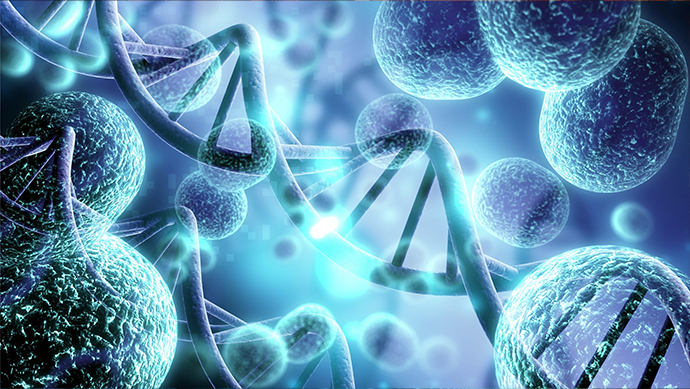Reshaping Genome Editing: Doudna & Charpentier, the Founders of CRISPR/Cas9 and Their Legacy

The History of CRISPR & Discovery CRISPR/Cas9
Clustered regularly interspaced short palindromic repeats (CRISPRs) were originally discovered in archaea (single-celled microorganisms that are similar to but evolutionary distinct from bacteria) by Franciso Mojica, a scientist at the University of Alicante in Spain. He noticed interspaced complete gene sequence repeats in archaeal organisms. Mojica investigated this phenomenon further and his research showed that these genes were part of a primitive and adaptive immune system that bacteria deploy to cut and kill DNA from parasites.
CRISPR/Cas9 is a tool that uses guide RNA (gRNA) and a Cas9 enzyme to edit parts of the genome. It was discovered in 2012 by Jennifer Doudna, Professor of Biochemistry, Biophysics, and Structural Biology at UC Berkeley, and Emmanuelle Charpentier, Director at the Max Plank Institute for the Science of Pathogens.
Related:
- New Trailblazer Profluent Launches its AI-enabled OpenCRISPR-1 to Edit the Human Genome
- Accelerating Target Discovery with Genomic and CRISPR Techniques
- Overcoming the Challenges of Precision Genome Editing
The discovery of these genetic scissors was unexpected. Charpentier's studies of Streptococcus pyogenes, harmful bacteria that causes a broad range of diseases from mild localised skin infections to life-threatening invasive infections, revealed an unknown molecule called trans-activating CRISPR RNA (tracrRNA).
Charpentier then collaborated with Doudna, to discover that CRISPR RNA and tracrRNA could be joined together to form a single molecule named guide RNA. The guide RNA plays a crucial role in leading the Cas9 enzyme to the specific DNA sequence that needs to be cut.
Doudna and Charpentier then conducted an experiment in which they selected a gene and picked 5 different locations where they wanted the gene to be cut. They successfully programmed CRISPR/Cas9 to cut the gene at the predetermined sites, an overwhelming breakthrough that reshaped the course of gene editing.
Applications of CRISPR
Since its discovery, the use of CRISPR/Cas9 has rocketed. CRISPR genome editing enables scientists to quickly create cell and animal models, which researchers can use to accelerate research into diseases. Moreover, this genome editing method is faster, cheaper, and more accurate than traditional DNA editing techniques. Furthermore, CRISPR/Cas9 has a broad range of potential applications which are briefly discussed below.
In late 2023, just over a decade after the discovery of CRISPR/Cas9, Casgevy became the first CRISPR gene editing treatment to receive FDA approval. Casgevy treats sickle cell disease in patients over 12 years old and beta thalassaemia. This illustrates CRISPR's ability to treat rare diseases with unmet needs.
Furthermore, this milestone removed doubts around CRISPR/Cas9. Fyodor Urnov, Director of Technology & Translation at the Innovative Genomics Institute stated: "At this point, all hypotheticals, the words 'potentially' and 'could' or 'in principle' are gone. CRISPR is curative. Two diseases down, 5,000 to go."
CRISPR researchers are hoping to strengthen the capabilities of CAR-T immunotherapy in treating cancer. A key focus area has involved making allogeneic CAR-T cells from a healthy donor. These cells are then programmed to attack cancer cells and avoid being targeted by the recipient's immune system.
This is a highly ambitious therapy that carries the risk of the host's immune system rejecting the CAR-T cells. Experts anticipate that CRISPR technology could make improvements to their autologous CAR-T cells and make useful edits that could help cells evade rejection by the patient's immune system. However, CRISPR's application in cancer therapy is still in its infancy and requires further exploration.
Ethical Implications
Gene editing presents topical discussions in bioethics. Altering germline cells and embryos specifically raises bioethical concerns because editing these cells could lead to undesirable changes in the genome and this topic sparks debate around obtaining informed consent. When Chinese scientist He Jiankui created the world's first gene-edited babies, this provoked a massive backlash against him and gene editing techniques.
To prevent unethical use of CRISPR/Cas9 and other gene editing tools, legislation that considers the opinions of scientists, policy makers and other stakeholders must be developed, implemented and upheld.
Conclusion
Overall, CRISPR/Cas9 has unparalleled gene-editing capabilities and is a ubiquitous tool within the life sciences industry. Doudna and Charpentier's life-changing discovery has opened doors for exploring the functions of cancer-related genes, establishing tumour-bearing animal models, and probing drug targets which have led to a better understanding of cancer genomics.
However, the development of a safe, stable, and efficient strategy for delivering gene-editing tools to disease cells in vivo presents an obstacle to their use in clinical applications. Yet, scientists are focusing on optimising guide designs to reduce the instances of off-target effects. The potential of CRISPR/Cas9 is yet to be fulfilled.







